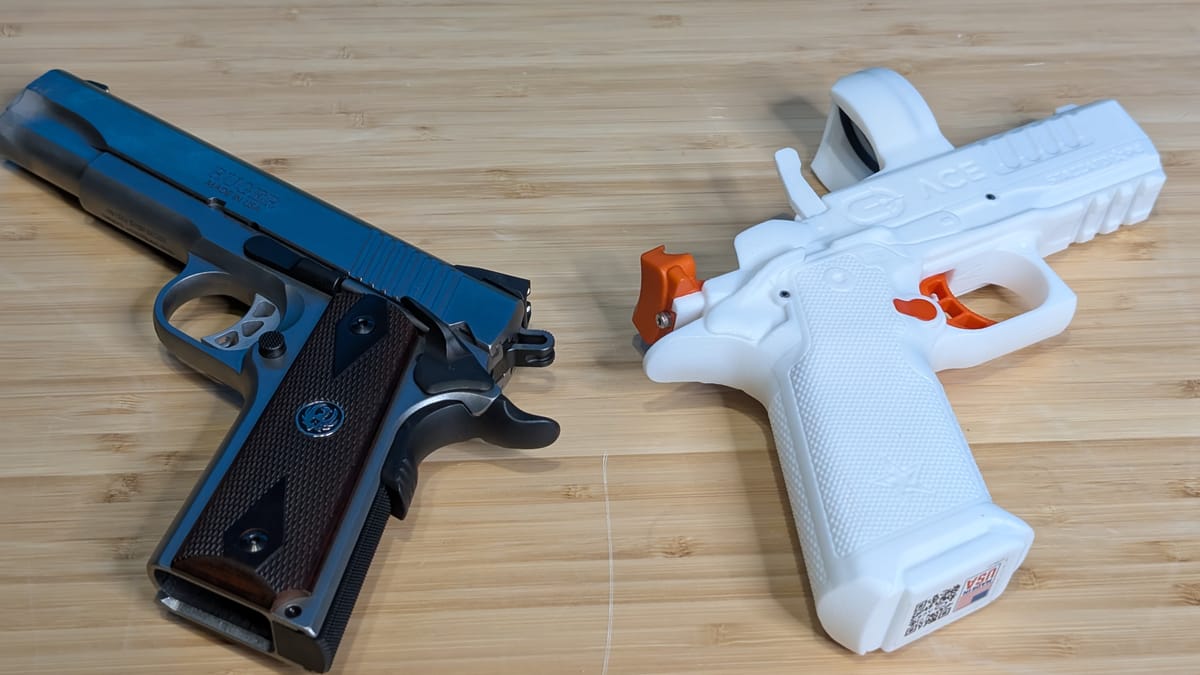
If you’ve been to the range recently, you know that ammunition prices have started creeping up, and in some calibers, by a very large margin. A recent check I made had 1000 rounds of 5.56 go up in price by roughly $100, with the same amount of 9mm popping up by $50. Manufacturers like Igman in Bosnia (primarily supplying 7.62x39 and 7.62x51) got hit with a 36% tariff, as did Prvi Partizan in Serbia. Seller & Bellot from the Czech Republic saw a 20% poke in the eye, with PMC from South Korea getting a 25% jab. If the intention is to convince American manufacturers to step up their game, somebody should explain to our government that the constituent precursor parts are manufactured elsewhere and then imported, regardless of where the jacket or round itself might come from. For example, nitrocellulose (smokeless powder) is imported from China. Copper, zinc, antimony, and other components aren’t getting cheaper either, making running a reloader no less expensive. Additionally, all of the periphery items like optics, targets, eyes and ears, magazines, holsters, and other accessories are also seeing a solid bump in price. Weapon systems manufacturers are always willing to embrace a crisis (real or perceived) as an opportunity to raise prices on my favorite pastime. What can we do when the cost of this hobby is getting more expensive by the day? Especially since even the most aggressive estimate to stand up a factory in the US is at least 5 years out.
I find catharsis in maintaining my shooting skills at the range, so I began to look at alternatives. This led me to a place I didn’t expect – VR. While there are more than a few shooting games out there, none are really aiming to approximate the real-world exercises needed to stay sharp. Until now. A company called Ace Virtual Shooting is looking to combine real-world realistic accessories with the power of virtual reality to provide as realistic an experience as possible, but without all of the expense. Can they build something that could approximate the real thing? I picked up their new Staccato P4 platform and took it to the virtual range.
I’m playing on the Meta Quest 3 (though it’s also compatible with the Quest 3S, Quest Pro, and Meta Quest 2), so installation was a breeze. Heading into the Meta Quest Store or the Mobile App on my phone, I was able to find the “Ace” App, downloading it to my headset in a single click. After a 3.9 GB push, I was ready to unbox the pistol platform.
Opening the box for the Staccato, I was immediately impressed. Inside the box is the pistol, of course, but also a checklist from the QA team to ensure everything made it in the shipment safely, as well as a personal thank-you note from the CEO. Also in the box is a handful of stickers and an adapter for the Quest 2, in case you’re using that platform. With all of these out of the box and the soft foam cover removed, it was time to pull the weapon itself.

The Ace team sells five weapon platforms – the SIG P320 Legion, SIG P365 XMACRO, Staccato HD P4, Staccato P 2011, and Ace Arctus. As I mentioned, I’m using the Staccato HD P4 platform. The real Staccato HD P4 weighs in at 32oz. Pulling out the analog from Ace it weighs…well, you probably guessed it – 32oz. In fact, putting the pistol in my grip feels precisely the same as the real thing – something that ultimately is more than just aesthetics, as I soon found out.
Every “toy” simulation gun I’ve used with any of the VR rigs I’ve used, from the Nintendo Super Scope to the various gun stock simulators for PSVR1 and 2, all have the same trigger pull, which is to say, almost no resistance at all. On modern headsets they often just use the trigger on a controller or the motion handsets as triggers, meaning they have a small spring that is more responsible for returning the trigger to neutral than it is a simulation of a real weapon trigger. The Ace Staccato HD P4, on the other hand, implements a 3.5 pull weight, complete with a tactile and audible click when it reaches firing position, and a forcible return to neutral trigger position between pulls. This is the same pull force as the Ruger 1911 I use as my personal sidearm, and the same action as the real-world Staccato HD P4. As such, it perfectly simulates the firing of a real gun, albeit without the recoil. Surprisingly, the simulation doesn’t end there as the Staccato HD's ambidextrous mag catches are also modeled here, able to release a magazine without adjusting hand position. Best of all, you’ll slap your next magazine in with a tap of the bottom of the handset, just as you would to seat a mag in the real world.
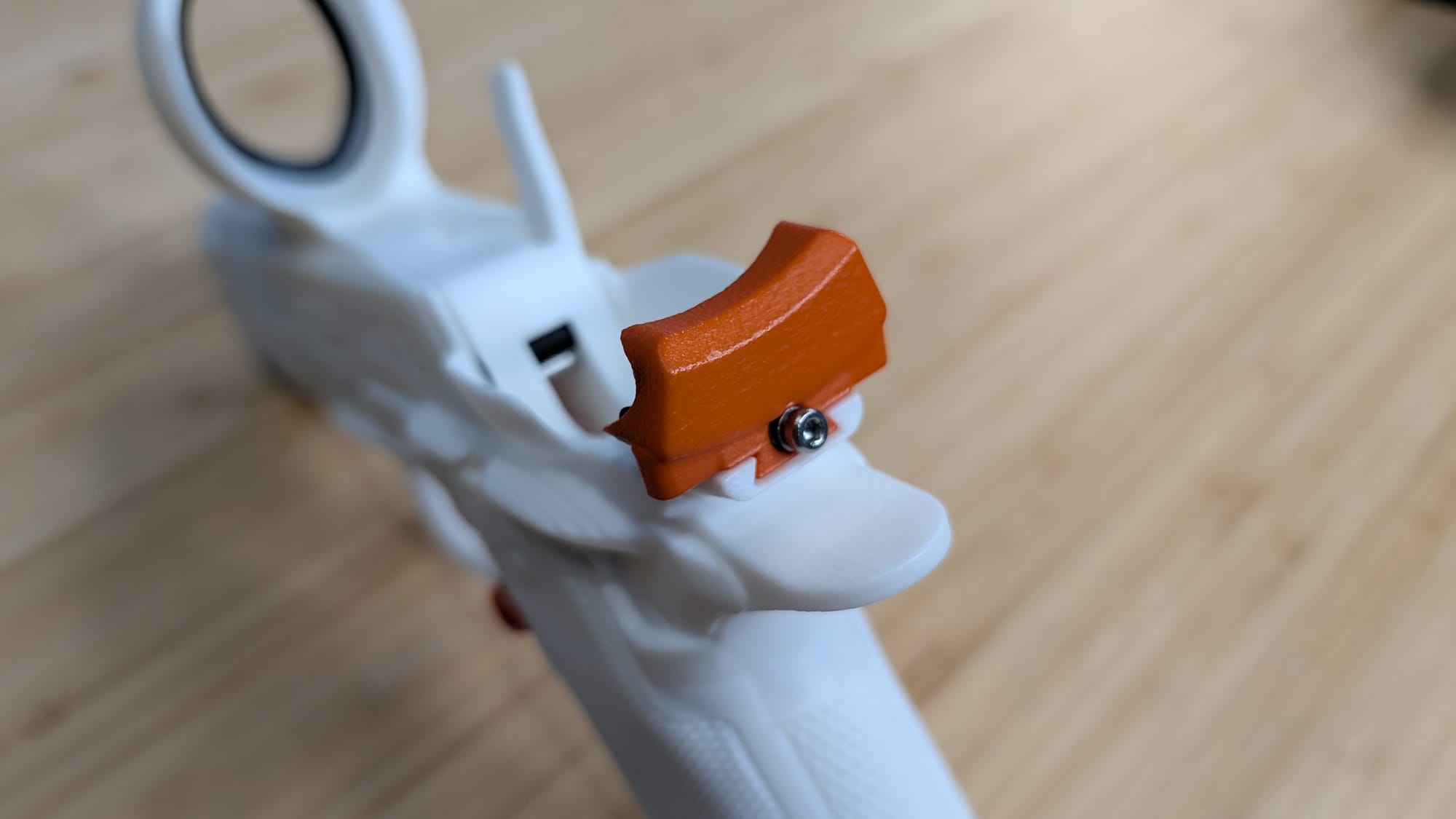
One of the things people don’t expect when they train is the shoulder fatigue that comes with spending time at the range. The same thing applies here. If it’s been a while since you last visited the range, you’ll feel it after you spend a bit of time doing drills. You’ll feel the fatigue in your shoulder from holding two pounds at arm's length and concentrating. You’ll feel the pressure on your legs and knees from taking a kneeling supported position to fire at lower targets. You’ll feel it in your lower back from slicing the pie and leaning around obstacles to take clean shots. You’ll also get a bit of a workout from doing these things at speed, peeking, firing, and pulling back behind cover. I was even more surprised at what I felt next.
After only an hour or two of range time, I stopped paying attention to the fact that it’s virtual. Stepping into a circle of flowers, I shot at increasing numbers of drones carrying progressively smaller steel plates. I executed Dozier Drills and two-by-ones without thinking about the fact that the targets aren’t really there. While it’s true this isn’t exactly Unreal Engine 5 level of graphics, they more than suffice to cause the world to melt away after a while, leaving you focusing on fundamentals and firing positions rather than the mental distraction that it’s all virtual.
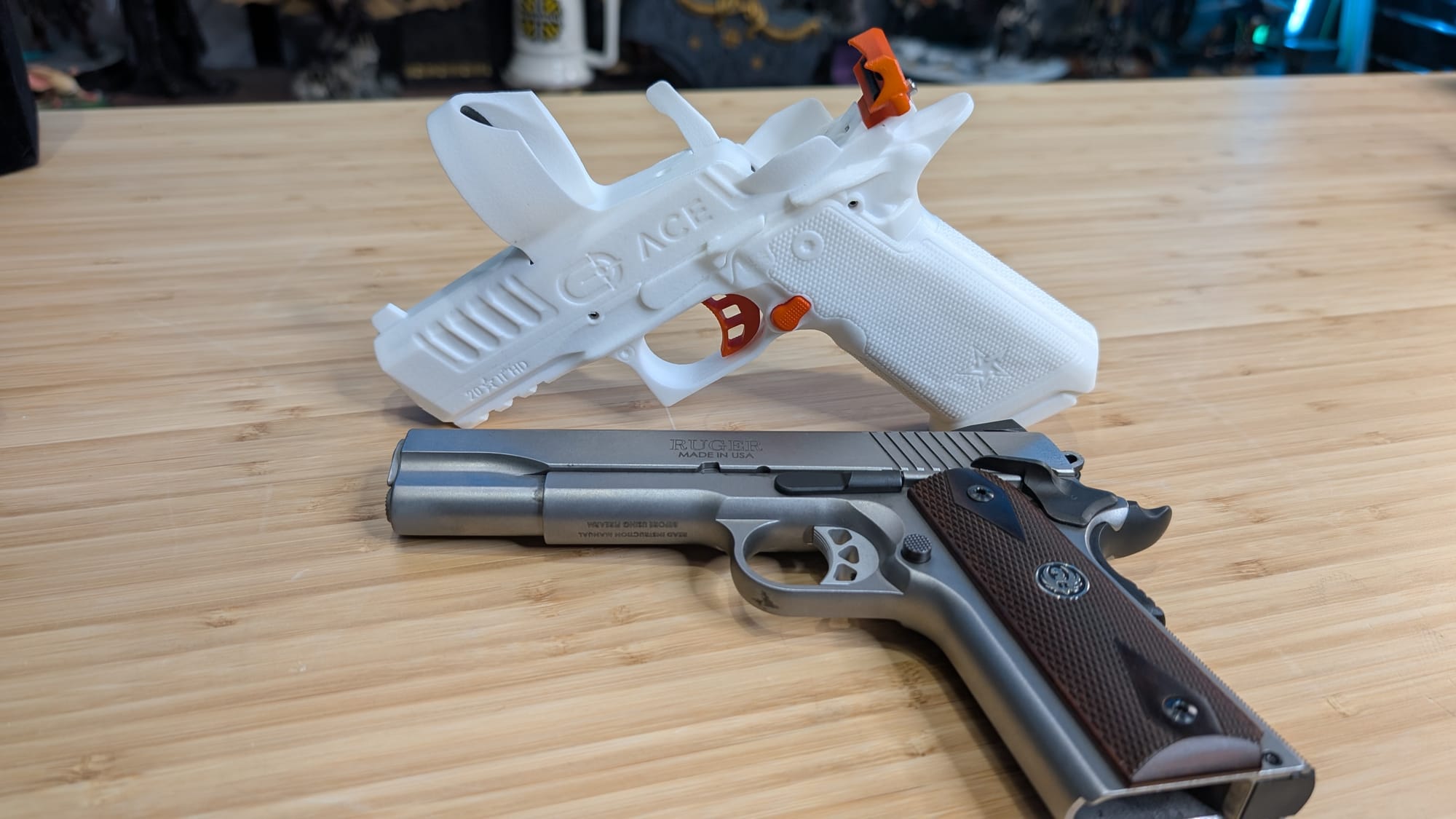
The biggest surprise after a few weeks with Ace Virtual Shooting’s platform is just how much it reduces your overall cycle time between rounds. No longer are you standing there listening to the whir of the target retrieval system. No longer are you resetting paper or grease penciling your shots for analysis. Directly after the ending buzzer, you’re already seeing that you might have double-tapped target A, and you might have slapped the trigger on target B. As your rep count goes up, so does your skill, creating a transferable skill that you can bring to the range the next time you visit. Yes, you can use dry fire drills to try to accomplish the same thing, but without any feedback, you can convince yourself you hit just about anything.
Outside of just shooting drills, there are two other aspects of law enforcement, HVT detail, or personal protection that you’ll likely struggle to practice at a public range – drawing and firing from a holster, and the art of reloading. I call it an art as there are easily a dozen ways to replace a depleted or partially depleted magazine, including slide-lock, tactical, combat, speed, and reload with retention, just to name a few. As I mentioned earlier, the Ace Virtual Shooting platform has an ambidextrous mag catch and release button. While it doesn’t drop the mag, you do have to get a proper hold position for that release, and you’ll slap the bottom of the mag to “seat it”. You don’t get the physically dropped mag, but you do get the chance to work proper hand position. Just remember that there are additional pieces where an instructor will help you learn (e.g. run your index finger up the front of the mag to touch the top round to ensure you don’t orient the mag backwards). Consistency leads to efficiency, and acquiring a proper grip the same way every time is half the battle.
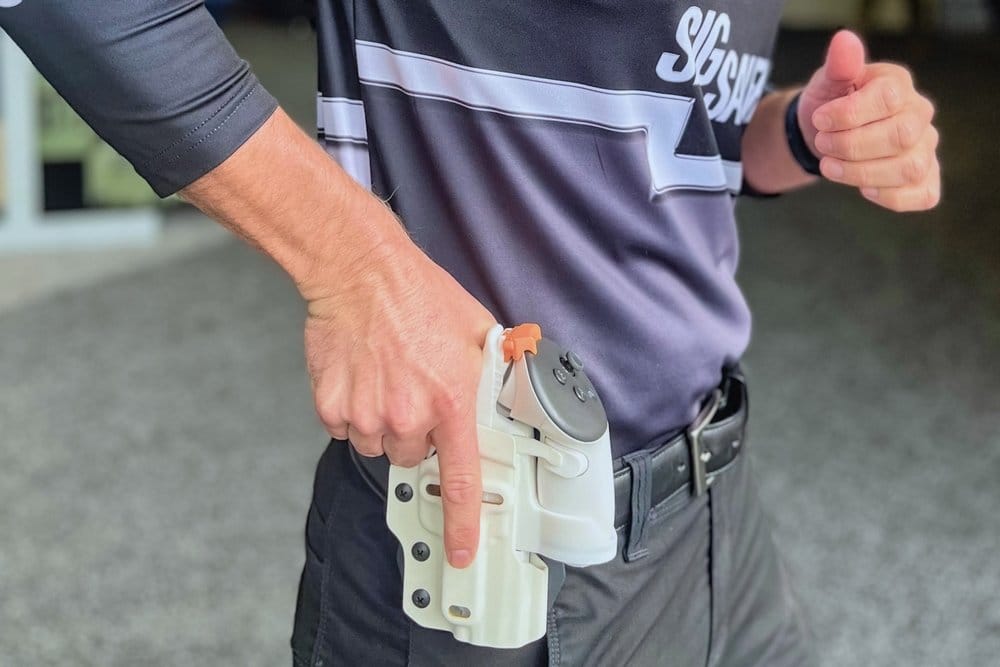
There is only one aspect of this entire shooting platform that I feel is missing – instruction. There is no substitute for a real human helping you, but building basics is done the same way nearly every time. How to properly hold the weapon platform (you aren’t a cop in the 60s, stop with the teacup), the best way to lean into your shots instead of standing straight up, and the best way to improve overall accuracy. The mag training I just mentioned is another such example. Training videos that help you unlock real-world shooting experience within this platform would help ensure you arrive at the range with a base platform of skills. There are some tutorial videos, but the vast majority of these are about the platform itself more than fundamentals. The good news is that this is an area where Ace could invest – there’s nothing to prevent that growth in the platform if their customers demand it. That brings me to the big question – who is this for?
From the second I put this hyper-realistic analog in my hand, my brain thought of all the times when I had 10 minutes, but not 10 minutes plus drive time, parking time, a range reservation, weapon check and sign-off, etc. etc. With Ace Virtual Shooting and my Quest 3 I’m able to be on the range in a minute, work a few drills, and then finish my lunch – it’s always accessible when a range might not be.
Off the range, you have a small hut to keep your weapons, look over your drills and performance, compare scores against both local, group, or global leaderboards, and do a bit of gunsmithing. A small bucket in the corner for your brass keeps track of how many thousands of dollars you’ve saved by using this platform over hitting the range. Let’s start with groups, as it’s a pretty great part of this system.

There are a lot of different job functions that require shooting skills, and there’s always personal protection as well. There’s also just getting together with friends and family who enjoy the sport and like to compete. The Ace team has attracted tens of thousands of shooting fans across all stripes, and using the groups function either in the game or on the site, you can join up with them for leaderboard competition. Maybe you’re a Texas Longhorn fan – 286 members are hanging out there. Perhaps you’re a member of Ace’s Discord group - nearly 1600 folks are ready to join you on the range. Or you could just be a “Regular type dude” – there are nearly 600 of us. It allows you to sort your results against a group you might already be interacting with, so the fact that you just beat “LafingPutz” in the weekly means a lot more. Sure, your friends at the range might be local, but taunting them mercilessly online can span the globe.

As you gain experience on the range, you’ll be presented with challenges. Completing these gives you access to new ones, pushing you to grow your fundamentals with fresh drills. In addition, there are daily and weekly challenges that have you competing against your friends and the leaderboard for position. Watching professionals whip through drills at blinding speed makes me feel safer that these folks are on our side. If you’d like an example, watch the tutorial for gaining ranks. Wow.
Heading to the bench, you’ll see that Ace is working hard to make your weapon platforms look exactly like the real thing. On a pegboard are the weapons you’ve purchased with the in-game currency (“brass”) you earn by completing drills. You can then customize those weapons with real-world front sites, rear sites, skins, new slides, mags, and more from companies you will recognize like Trijicon, Hollosun, Primary Arms Optics, Sig Sauer, Vortex, and many more. It’s not a gameplay change (except the optics, which can change things quite a bit), but you can at least build the weapon you might be using in the real world.
There are several ways to jump into the Ace Virtual Shooting Simulation system. If you have your own Quest 2 or 3, your headset will be compatible. The pistol itself will set you back roughly $200, though there are sales to pick up a slight discount (like the Memorial Day one that just passed). A holster will cost another $50, though that’s hardly a requirement, of course. Still, drawing from that sheathed position will teach you good weapon disciplines, so it’s a worthwhile investment once you’ve learned the ropes a bit. These two things, plus your VR headset, will give you access to a basic range where you can throw lead and practice groupings and basics, albeit without access to the wealth of drills on offer. To get access to the ever-expanding and frankly incredible list of drills, you’ll need a subscription. Ongoing development isn’t free, but with the speed of development I’ve seen just in the last month and change, you are getting far more out of what you’re paying for. A subscription costs $19 a month, or you can prepay annually to drive that price down to $14.99. For military and first responders, the Ace team offers a permanent 20% discount as a thanks for their service – not a surprise given the military pedigree of the folks behind this incredible weapons training platform. There’s even a Quest 3S bundle for those starting from scratch, including a Meta Quest 3S VR headset, an Ace pistol of your choice, and an included one-year membership for $649.
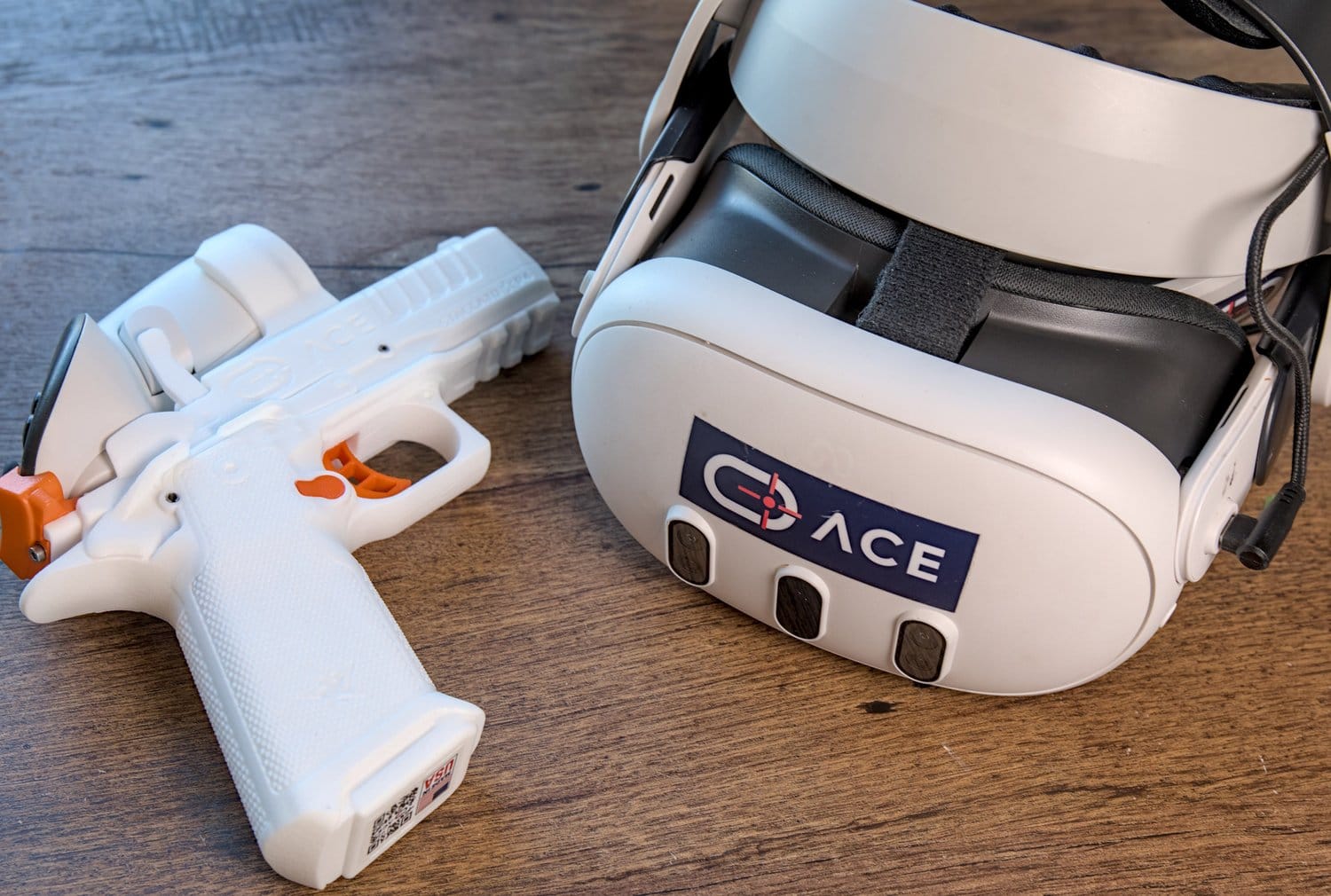
After putting several virtual thousand dollars worth of virtual bullets down a virtual range, but feeling the real-world effects of shoulder soreness, I had a real appreciation for one thing more than anything else – the Ace Virtual Shooting system translates fake bullets into real skills. More than dry fire drills, more than simunitions, more than front sight focus strings, more than airsoft, laser trainers, or snap caps. Seeing my time on target improve, my front post discipline, and my target identification improve by a significant amount made me a believer. Seeing my scores go from the bottom of the barrel to pushing into bronze and silver territory gave me the same rush that it did every time I watched my target paper whip towards me on the range to confirm my shots. While there’s no substitute for the real thing, this is as real as it gets without policing your brass.
Ace Virtual Shooting Simulator
Excellent
The Ace Virtual Shooting system is easily the best weapon pistol fundamental training system I’ve ever used. Every target training drill I could imagine, combined with a vastly reduced cycle time between training exercises, and for less than two trips to the range, makes it not only worth it, but practically mandatory. Whether you’re in law enforcement, the military, or just want to keep your home defense skills sharp, this is a must-have.
Pros
- An ever-expanding catalog of drills and exercises
- Daily, weekly, and seasonal challenges
- Ace pistol platforms are PERFECT analogs for the real thing
- Instant cycle time between exercises
- Multiplayer clubs are a cool addition
- Perfectly priced for the high-quality platform
Cons
- Additional training videos on fundamentals, please
This review is based on a retail version provided by the manufacturer.
